Search coils are one of the most important parts of a metal detector so it’s important to understand how search coils work. In this article, I will explain how search coils work so you have a greater understanding of how you can find what you detect with your metal detector.
Search coils are flat in design and they are the component of the metal detector that does the actual detecting of the objects you are searching for. Most search coils have two copper coils that work together.
One of the coils is called a transmission coil and the other is called a receiver coil. There are some search coils that have just one coil that works as both the transmission and receiver coil and they are called mono-coils.
The transmission coil will produce a magnetic field in the ground and if a metal object is within that magnetic field the transmission coil will detect interference in the magnetic field. The receiver coil will sense this distribution in the magnetic field alerting the operator of a find.
Click here to check out my picks of the 5 Best Metal Detectors for beginners.
Search Coil Sizes
There are three general sizes of search coils small, medium and large. I will now explain the different sizes and there function as it pertains to what they are best used for.
Small Sized Coils
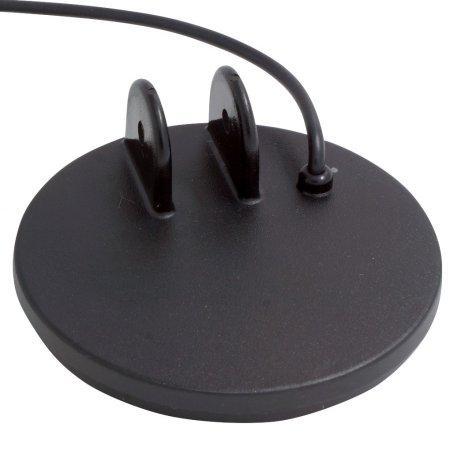
Small-sized or mini search coils are up to 5” in diameter. With these mini coils, you can get into tighter spots than larger sized coils cannot. They provide for greater target separation.
They work great when detecting in junk ridden areas and they can discern between metal objects that you don’t want to detect like metal fences and poles that may be in the detecting area.
The problem with mini coils is that you can’t detect large areas at a time and they are only sensitive to a short distance underground. But they work wonders in finding coin-sized objects less than 2 feet underground.which is where you would find most of the loose change that people have lost.
Coils that are still considered small are the 7.5 diameter Double D coils they provide for a more pinpointed scanning in a larger area than the mini coils. But if you are looking for more depth in your metal detecting capabilities and want to detect larger areas you will want to consider the medium-sized coils.
Medium Sized Coils
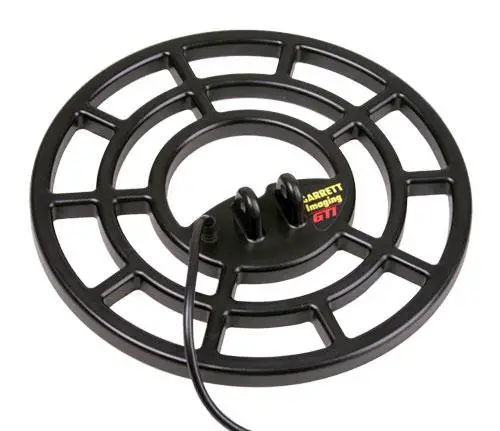
You will find medium-sized coils in the range of 8” and 11.5” diameters. This size of search coil is the most widely used of all search coils because you can cover a fair amount of ground and they are less cumbersome than the large-sized coils.
The Double D search coil in the medium size works well for high mineralized soils and they can detect to greater depths than the smaller coils.
They don’t work as well if there is a lot of iron in the detection area. A smaller sized coil will work better in an iron infested area because of the better target separation that smaller coils have.
Large Sized Coils
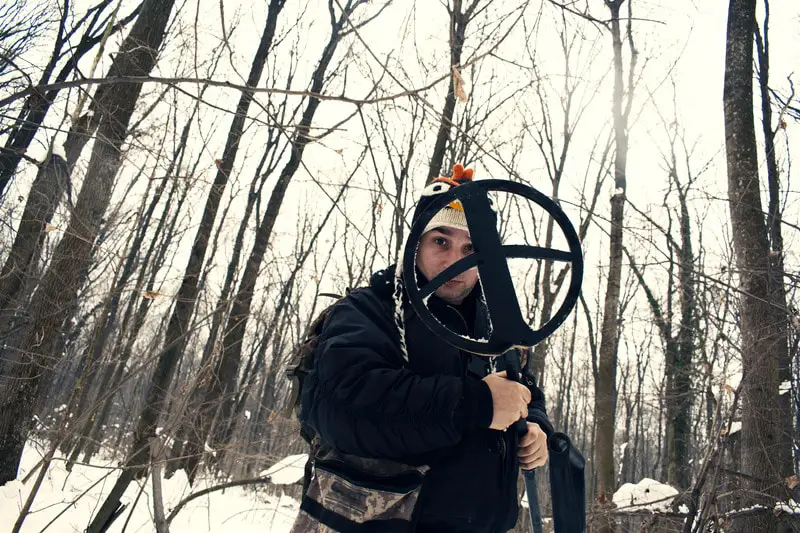
Coil diameters of 11.5” to 24” are considered large-sized coils. This size of search coil works well in large open areas because you can cover larger areas of ground making for a more efficient treasure hunt.
Large-sized search coils can detect deeper into the ground but they have a harder time discriminating if there is a lot of minerals in the soil. If the soil is highly mineralized it shortens the depth at which the metal detector can detect.
Large coils work better on Pulse Induction metal detectors if you’re looking for targets at greater depths. So if you’re detecting for larger sized relics and a lot of coins buried in one area then the larger coils will work well for that.
The problem with large coils is that they are heavy to carry around for long periods of time and you will probably want to utilize some kind of hip mount when using these large coil detectors.
Large coils have a harder time at pinpointing small coin-sized objects and they are not good at finding and differentiating more than one target at a time.
5 Types of Search Coils
All search coils for metal detectors have an electrostatic shield on them and they are also waterproof. Basically smaller search coils will detect smaller targets much easier than large search coils and smaller coils are better at discriminating between the object you are detecting for and junk you sometimes find when metal detecting.
Large search coils are better at detecting larger objects deeper down. So depending on what you are looking for will determine which size search coil you will want to use. There are 5 types of search coils you can choose from and they are:
Concentric/ Coplanar Coil
Concentric coils consist of two search coils
- Transmit Coil that sends out the magnetic field into the ground. The transmit coil is the outside coil.
- Receiver Coil is the inside coil and it receives any interference found when a metallic object is located within the transmit coils magnetic field. The receiver then alerts the operator that a metal object has been found.
Concentric search coils are great for detecting small objects like coins and can pinpoint where the object is better than other types of search coils. The downfall though is that concentric coils have a more difficult time discerning the treasure from the junk.
Minerals in soil can also cause conflict for concentric search coils so if you are detecting in soil that is highly mineralized concentric coils are probably not your best option.
Concentric coils come in many thicknesses and designs. There are very thin and very thick models. Some of them have a spider web type design called a spider coil. Many detectorists like spider coils because they are more stable and sturdy and do a better job of discerning between the treasure and junk.
There are also elliptical and semi-elliptical models. Elliptical designs can cover more ground at a time compared to the round designs. The elliptical design is much better at detecting in rough terrain that hosts lots of weeds or rocky areas.
Imaging Coil
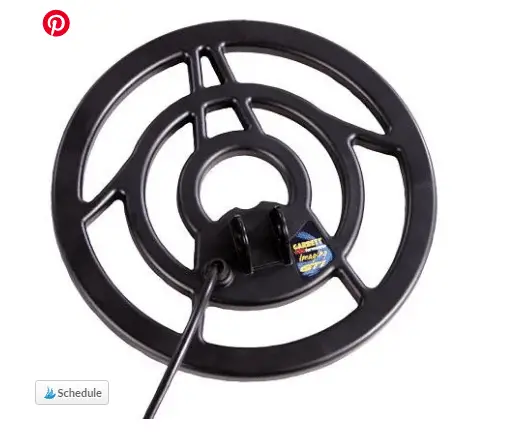
Another type of concentric coil is called an imaging coil that you find on more advanced metal detector models. An imaging coil has everything a concentric coil has plus a second receiver coil.
This second receiver coil gives the user more information about the target such as the size of the target and the depth it’s at. Making it much easier to know what you have found before digging it up and helps you know exactly where to dig.
Unlike the concentric coil, the imaging coil is better at the discrimination of the treasure from the junk and minerals in the soil. There is only one metal detecting company that has the imaging coil.
Garrett makes the only imaging search coils check them out here.
Mono Coil
Mono coil as the name suggests consists of one search coil that works as both the transmit and receiver coils. Mono coils are used on pulse induction metal detectors. These search coils work like concentric coils and have a hard time when used in highly mineralized soil.
The electromagnetic field goes above and below the coils and to get full coverage of the ground you are detecting on, you need to make many sweeps in the same area.
Mono coils come in round and semi-elliptical designs. With the semi-elliptical giving you a little more coverage than the round design.
Although you get good depth and sensitivity with a mono coil it lacks in its discrimination of minerals in the soil making it hard to perform a good ground balance. And if you don’t sweep over the same ground more then once you could miss many targets.
Double D Coil
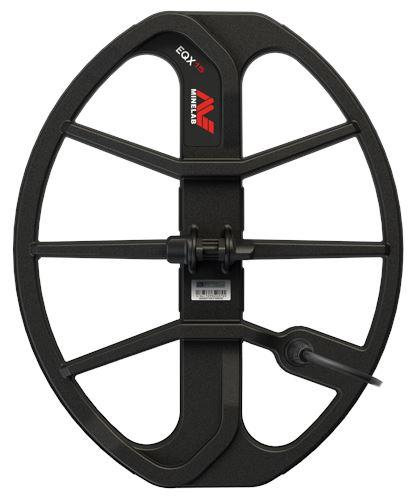
This type of search coil gets its name because the search coils look like two letter D’s side by side. Double D coils are known for great target separation so you can discriminate between the treasure and the junk more easily then you could with a concentric coil.
There’s a positive magnetic field that runs from front to back under the center of the Double D design. The other side of the coil produces the negative magnetic field that cancels the detection field. This helps the metal detector work better in mineralized soil. It essentially cancels out the minerals that are detected leaving only the metal targets you are looking for.
Although this design is good for detecting in mineralized soil it’s not as sensitive as a concentric coil because of the positive magnetic field that it produces. So you have a harder time pinpointing smaller metal objects like coins. But the Double D works great for larger objects like relics that are in highly mineralized soil.
2-Box Coils
These types of coils have two search coils the transmit and the receiver that is separated by several feet from one another. This separation gives the detectorist a much larger area of detection. It also makes the metal detector more lightweight making it easier to maneuver.
The 2-box models are great for detecting relics and larger objects deep in the ground but are not useful if you want to find smaller coin-sized objects.
What Type Of Search Coil Should I Use?
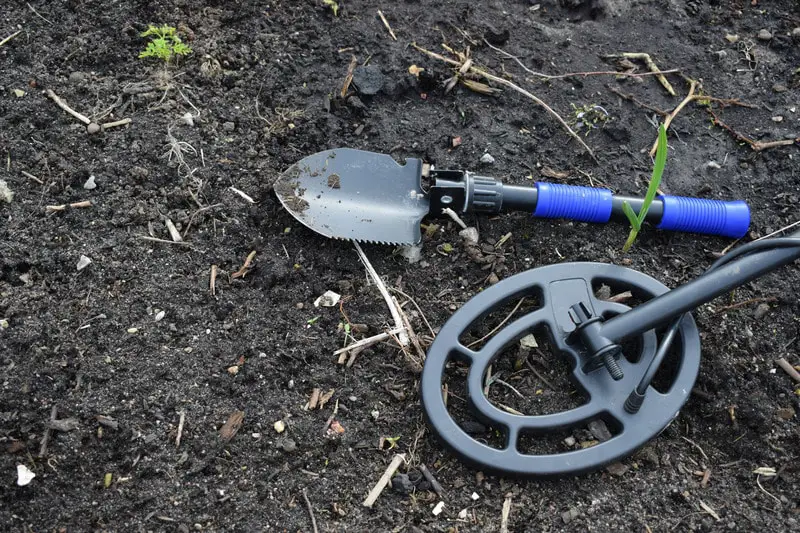
Many beginner detectorists ask what type of search coil should I use. Well, that all depends on what you are searching for and what type of metal detector you are using.
Metal detectors come with there own standard search coil that works for that particular model of the detector. And usually, the coil that comes standard on the detector will work in accordance with the type of metal detector.
Detecting For Coin Sized Objects
If you’re searching for coins and smaller objects a concentric style search coil will work well because they have a higher sensitivity to smaller objects but not at great depths but if you have imaging concentric coil you will be able to detect small objects at greater depths but you have to remember that only one company has imaging coils available.
Detecting For Large Sized Objects
If you’re aiming to find larger sized relic objects that are at great depths then you will want to go with the Double D or 2-box coil systems. These two types are better at ground balancing and work well in high mineralized soils but they are not as sensitive in finding smaller objects as the other coils are.
Are Search Coils Interchangeable?
I have heard this question asked time and time again.
Are search coils interchangeable? Search coils are not interchangeable between manufacturers and only a few can are interchangeable even between different models of the same manufacturer.
I recommend sticking with one metal detecting company for your metal detecting needs because it makes life much easier when picking accessories for your metal detector because that company will have what is compatible with the different models of detectors they produce.
Conclusion
In the end, it all depends on what you are actually detecting for be it coins or large relics and how deep those targets are. The other thing to consider is the terrain and type of soil you will be detecting in.
Size, shape, and design all are key factors to consider when selecting the right search coil. So knowing what you want to detect and where you will be detecting will go a long way in determining what type of search coil is right for you.
Keep in mind if you purchase a new search coil for your metal detector you will need to send the coil and metal detector into the manufacturer to have it properly tuned. If you don’t get the new search coil tuned with your metal detector you will never know if the metal detector and search coil are properly working together.
If they aren’t working together you will miss out on a lot of treasure that otherwise could have been detected.
I hope I did my job of helping you learn how search coils work and how to go about choosing the right search coil for you.
If you have any questions or comments please leave them in the comments section below. And as always until next time Happy Treasure Hunting!

Peace be upon you dear friend. I have a metal detector with a mono coil. It is written that the 110 kHz coil is suitable for the device. In the old coil written 70 t _ 0.45mm wire with a diameter of 250mm. If I want to make a 500mm coil, how many turns of the coil? And does the diameter of the wire change? Thank you
Hi Arman, I haven’t made my own search coil before so I personally wouldn’t know the answer to your question. But you can check out: https://www.geotech1.com/forums/ Geo Tech is a forum dedicated to metal detector technology. You might find an answer to your question there. Thanks for reading and Happy Treasure Hunting!
Thank you for answering a lot of my question!
You’re welcome, Mike! Glad I could help. Thanks for checking out my site and good luck treasure hunting!